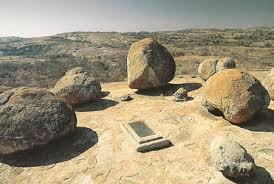NJELELE
LUNGA’S BURIAL SITE FOR THE BLAMELESS!
"The secret behind the respect accorded to
sacred areas and their environs lie in the taboos that are associated with
them," so they say.
In Lunga, Njelele is one such place! It is a tiny Island that looks desolate but
with a strong cultural attachment to the beliefs of the Unga people.
In 1974 when my
mother died at Mukanga village in Chief Bwalya Mponda of Ncheta Island, one of
my uncles firmly suggested that she be buried at Njelele, 40 kilometers away in
Nsamba chiefdom.
Uncle Chalwe was
convinced that if his sister’s death was caused by someone within the village,
she would come to haunt the killer’s family until they were identified.
Secondly, if the killer tried to stop her by
going to her grave and frustrate her vengeance strategies, s/he will be harmed
by all the innocent souls buried at Njelele.
It was undoubtedly
believed that only guiltless people who never practiced witchcraft and other
vices against humanity were buried at Njelele.
The dead’s
innocence was confirmed because, according to Unga folklore, whenever an attempt was made to take a witch to Njelele for burial, canoes strangely got
either stuck or mourners lost their way to the site.
My grandmother
told us that if you passed near Njelele in the evening, you could hear the dead
chat among themselves. Njelele was hence perceived to be a peaceful resting “village”
for the blameless victims of injustice.
It was,
therefore, a common belief in Lunga that if your relative died in a suspicious
manner such as sudden death, unknown sickness or less understood circumstances,
you buried her at Njelele.
One reason for
this was to seek justice by allowing the dead to avenge herself without hindrance.
The other reason
was to honour unimpeachable behaviour.
Superstition was
and still is a fundamental belief among the Unga of Lunga District. No one died
of natural causes. Every death had to be traced through divination until the
killer was found.
Many forms of inquiries
of the dead were employed. Common methods that witch-finders used were ulubuko, where the witch-finder consulted
a spirit medium to reveal the killer.
The most interesting form was called Citaleme also
known as Iciminine. This is the form
of magic practice where the witchfinder controls the coffin so it could
pinpoint a witch.
The coffin would
seem to be in control of the movement of pallbearers and direct them where it
could find the suspected killer
.
The pallbearers
would carry the coffin in the direction of the designated burial site but it
would appear to turn away till it lands in the doorway of the suspected
killer. Interestingly, this was some respected wealthy person. It had to be someone who could afford to pay off the witchfinder in cash or in kind.
The crowd of mourners would be shouting; “londola!
londola! londola!” (search and find the killer!), while they ran following the
coffin behind the witchfinder.
Before the suspect is coerced into admitting to have had induced or contributed to the death,
the corpse in the coffin would not be easily moved. It would be too heavy to lift even by ten strong men!
Only upon
admission by the “witch”, would the dead person “agree” to be buried by easing
carriage of the corpse to the grave and would cease to play the role of a
compass and driver.
Those who did
not afford or opted not to use the ulubuko
and citaleme methods of divination
would then resort to taking the body to Njelele islet.
 |
| Njelele of Matobo National park- Zimbabwe |
Relatives of the
deceased would then charge the guilty party a ransom ranging from a banana
boat, canoes, a gun, sewing machine, or/and money.
Njelele was
therefore not just a sanctuary of the innocent corpses but also a vantage point for
vengeance.
 SoundCloud
SoundCloud



Comments
Thank you for your custom.